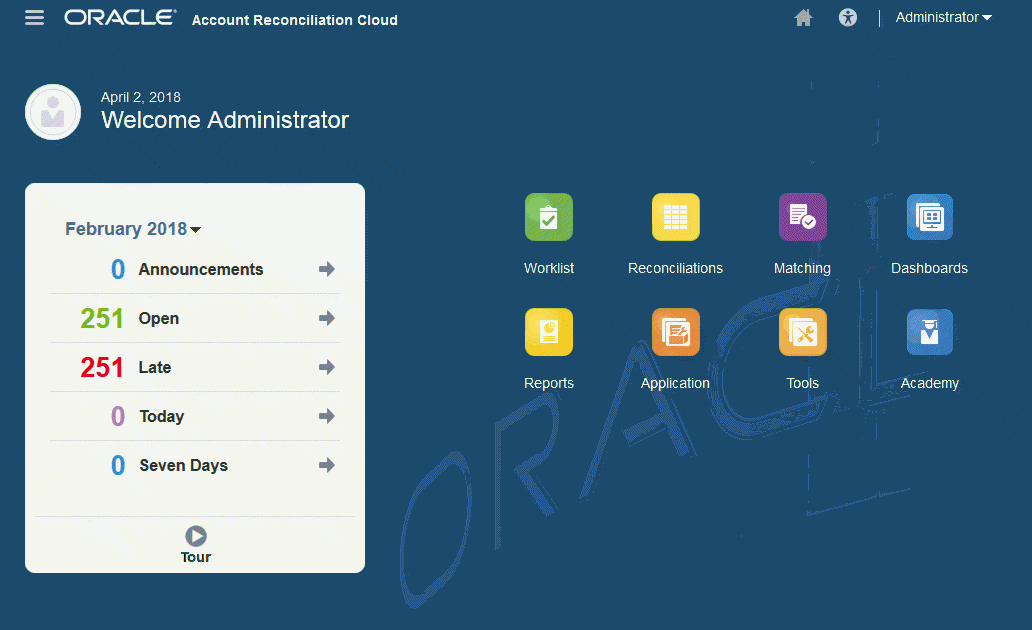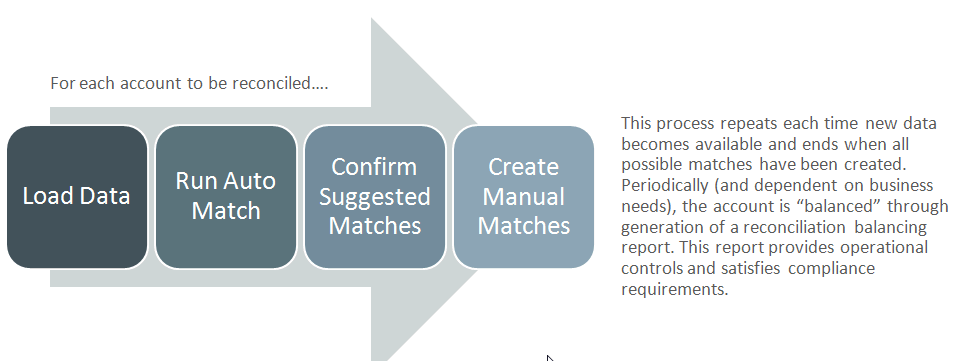How Account Reconciliation Cloud Service(ARCS) from Oracle can improve efficiency of the finance users

In this world of cloud computing and mobile applications, we have software applications to increase the efficiency of our personal and official tasks. Software applications are being used for a grocery list, tracking heart rate, and energy burned etc. It is interesting to know that more than 60% of organizations are still performing manual reconciliations between systems and subsystems. The approval process is managed using emails and there is limited visibility on the accountability. Lack of governance in the account reconciliation process cause problems in the audit. Accountants are not leveraging technology to decrease the burden during the monthly close process. With new IFRS standards and new requirements from the regulator, this reconciliation burden is going to increase more. This account reconciliation is one of the major bottlenecks in the close process.
Good news is that Account Reconciliation Cloud Service (ARCS) from Oracle can help the finance users to perform automatic account reconciliations, efficiently manage the process and avoid security risks. Using ARCS, finance users can close their books early and spend time on analytical activities. Since this is a cloud-based solution, there is no capital expenditure required. Once ARCS are implemented, it is deployed on the Oracle cloud and the IT department does not need to maintain it.

This best in class reconciliation solution has Reconciliation Compliance and Transaction Matching modules in a single instance.
- Reconciliation Compliance: This module helps in managing reconciliation processes and ensure that compliance requirements are met.
- Transaction Matching: This module increases efficiency and saves cost by automatic matching of the bulk and labour-intensive transactions.
The reconciliation process is executed in 5 steps in the Reconciliation Compliance module:
- Load Balances: Balances from source systems and subsystems can be loaded directly into ARCS. This loading of data can be scheduled as per the client requirement. Once data is loaded to ARCS, it can be drilled back to the source system. It has prebuilt integrations with EBS, JDE, PeopleSoft, and other market-leading ERP systems.
- Automation Executed: Once data for source systems and subsystems is loaded, ARCS performs auto reconciliations based on the account analysis, balance comparison and custom reconciliation criteria. Custom attributes will be assigned based on the rules defined. Amortization is calculated automatically. Email notifications are sent to the preparers and reviewers.
- Prepare Reconciliations: Preparers work on the assigned reconciliations by proving account explanations (Prepaid, Accruals) and doing balance to balance comparison (AP/AR/Inventory/Bank Reconciliations/Depreciation). It has prebuilt 20 common reconciliations templates. The administrator can create new templates as per organization’s requirements.
- Review Reconciliations: User can put comments and add attachments to each reconciliation. User needs to provide sign off on the reviewed reconciliations. It has multiple level approval and rejection workflow.
- Monitor the compliance process: ARCS give instant visibility to the progress and status of the reconciliation life cycle. It shows status charts on reconciliations pending with preparer, pending with reviewer and closed reconciliations. Ageing analysis dashboard gives information on the ageing of all transactions and ageing buckets. Each reconciliation (including attachments and invoice level details) can be extracted in a report binder and these report binders can be shared with the auditors.
In this way, ARCS efficiently manage reconciliation process with visibility and automation for improved accuracy, security and reduced risks.
If your organizations have a manual account reconciliations process and want to have an insight into the real-time status of the reconciliation and close process, ARCS can help in streamlining the reconciliation process.
Transaction Matching: This component helps in the automatic matching of high volume, efforts intensive transactions across one or more data sources. Examples: POS to Bank, POS to cash and credit card, and intercompany transactions (AP/AR) bulk transactions matching.
With customized rules having a lot of flexibility, the majority of the transactions are auto-matched. ARCS intelligence engine provides suggested matches for remaining un-matched transactions.
Transaction matching has 4 high-level steps:
- Load Data: Transaction data from source systems (like POS and bank) can be uploaded manually or scheduled using data management. ARCS has the capability to upload pre-mapped transaction data directly to it.
- Run Auto Match: User-defined custom rules run and automatically match the transactions between 2 systems.
- Confirm Suggested Matches: For un-matched transactions, ARCS intelligence engine suggests matches. User can accept those suggestions or modify the suggestions to match transactions.
- Create Manual Matches: User can manually match transactions by providing reason code or adding adjustments. Above mentioned steps are repeated for every data load.

ARCS provide reconciliation balancing report for operational controls. It has prebuilt reports on open/closed adjustments and supported transactions.
With above-mentioned capabilities, ARCS can really help in decreasing the burden of finance users and can increase the efficiency of the close process.
We can help with implementing this best in class solution as per the business requirements of your company.




Leave a Reply
Want to join the discussion?Feel free to contribute!